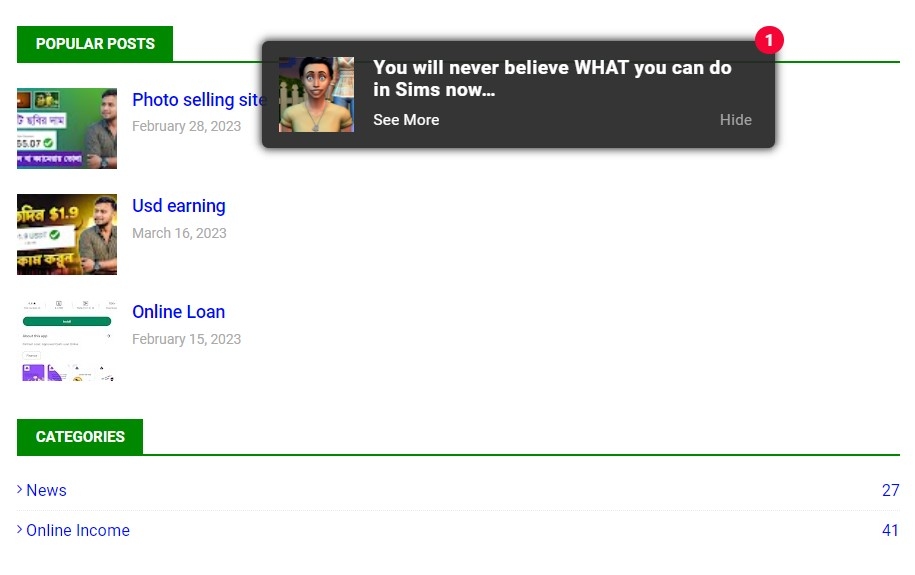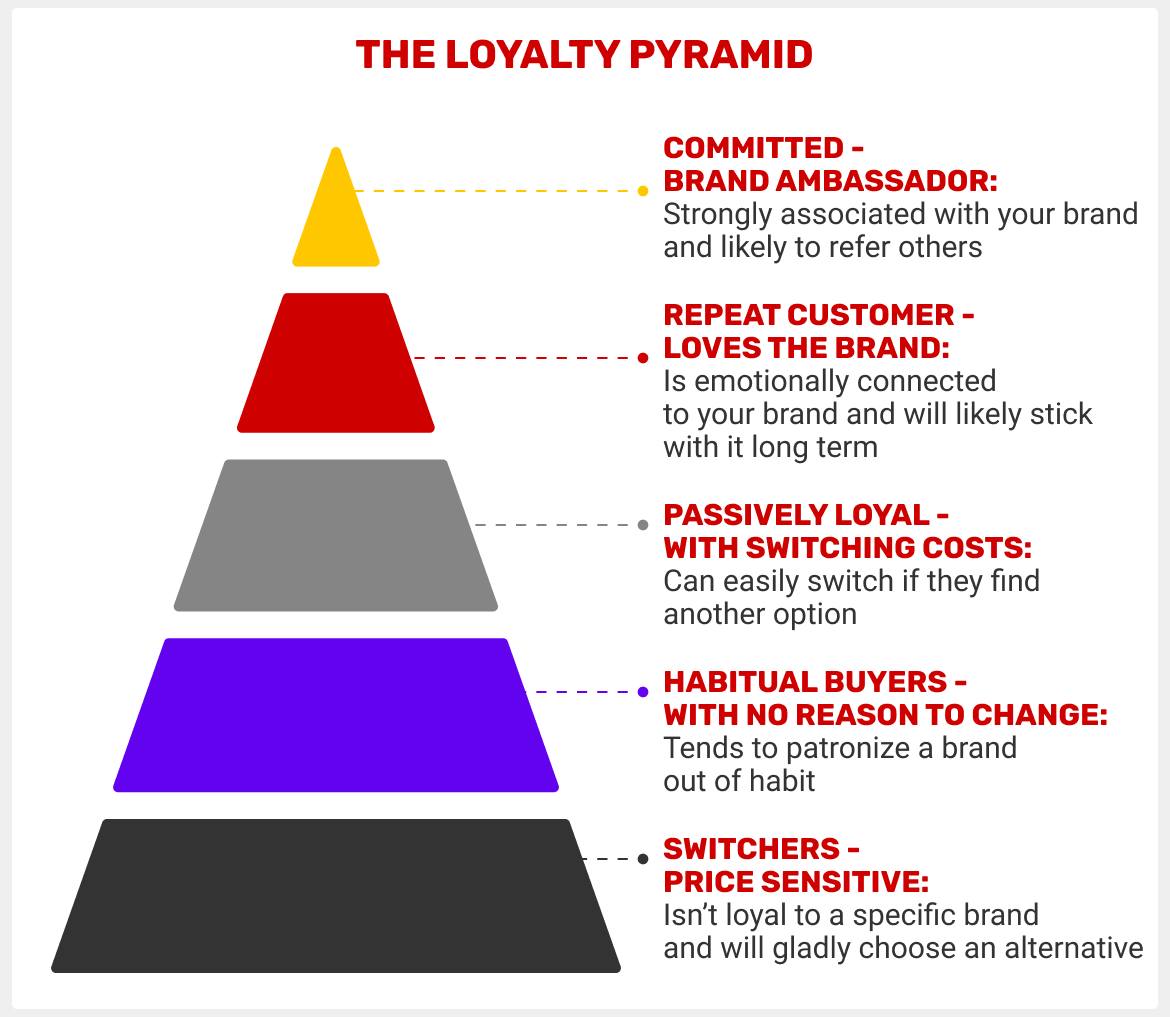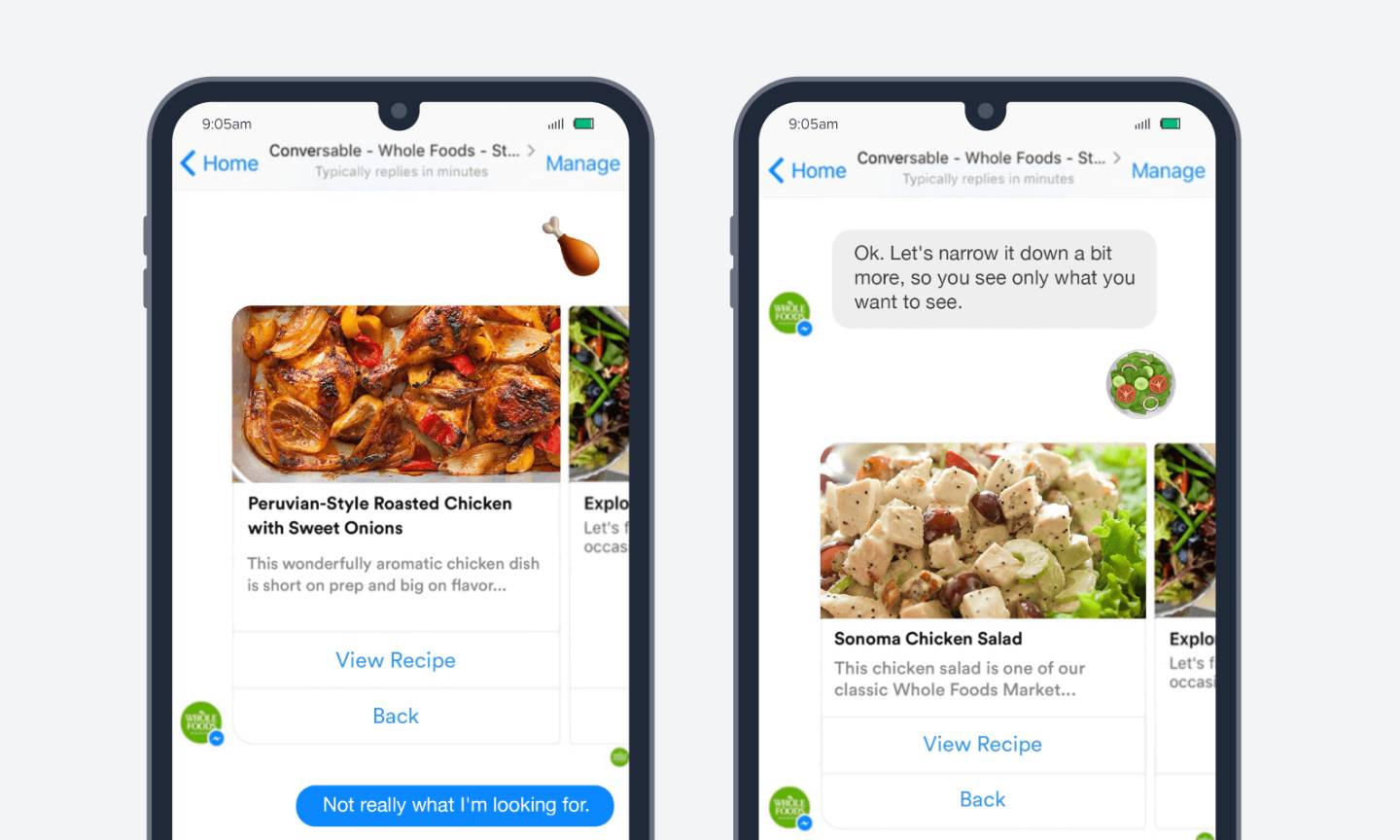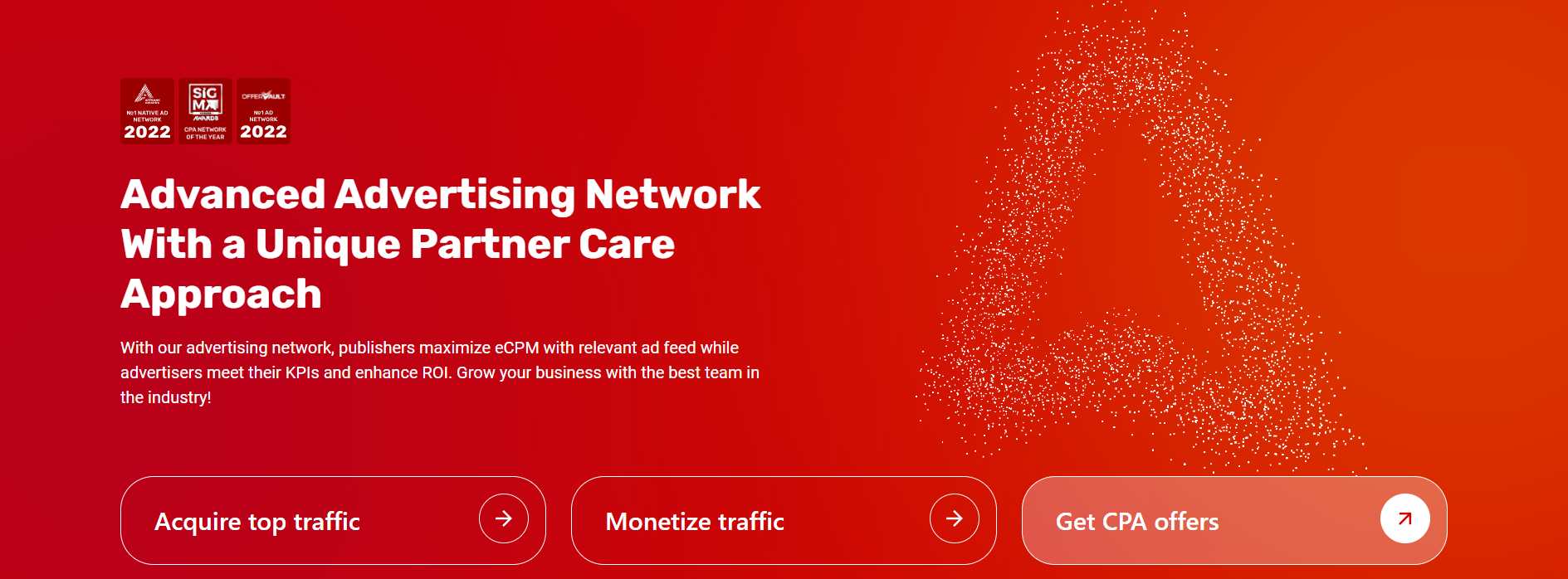Customer engagement is one of the top issues marketers and advertisers face. From the very first user interaction with ads till the final purchase, brands and affiliates need to keep users engaged. That’s why businesses needs an effective customer engagement strategy, and we’re here to help with the ultimate guide to this task.
What is customer engagement?
Customer engagement refers to the process companies take to form good customer relationships and foster loyalty. It starts from the initial transaction with a customer and proceeds into targeted marketing campaigns to keep that customer. The aim is to extend the customer lifecycle, converting one-time buyers into repeat buyers.
Effective customer engagement helps companies retain clients and gain more long-term sales. Any business not paying attention to engagement marketing is at a competitive disadvantage.
What is the customer engagement strategy?
Customer engagement strategy is the plan and process to captivate customers for the long term. It is the plan of action to create positive experiences for customers and encourage them to keep patronizing your product or service. It involves considerable marketing efforts through various channels like social media, email, search engines, display ads, word of mouth, etc.
Getting audiences engaged with ads has never been that challenging. That’s why visually appealing and aesthetically pleasing messages outperform simple banners. Adsterra offers you Social Bar and Interstitial ad formats that deliver CTRs up to 30%
There are two main types of customer engagement strategies: local and global. The local strategy primarily focuses on targeted advertising campaigns to lure customers. In contrast, the global strategy encompasses not only marketing but other channels like customer service, loyalty programs, discounts, etc, to retain customers. The global strategy involves maintaning close customer relationships across different channels.
Your engagement strategy within an ad campaign should embrace all your communication channels, answering the following questions
- What product are you offering?
- To whom are you offering the product or service (target audience)?
- What is your unique selling point (USP)?
It’s important to consider these questions in your ad creatives, promo articles, and landing pages.
Why are customer engagement strategies critical?
Customer engagement strategies are critical for the following reasons:
- It fosters loyalty: By engaging with customers, businesses promote long-term loyalty and encourage customers to continue patronizing their product or service. Repeat purchases translate to higher sales for relatively little effort.
- Valuable feedback: Businesses can get valuable feedback to improve their product or service and attract more customers. Engaged customers are willing to provide honest feedback.
- Advertising guidance: Having a clear customer engagement strategy guides you in choosing the right targeting tactics for your ads. It provides a clear path to picking the appropriate bidding strategy and advertising budget to achieve your goals.
- Brand boost: Conversing with customers via social media and other mediums increases a company’s brand following. Customer engagement is a proven method of boosting brand value.
- Revenue growth: Most importantly, customer engagement strategies enable companies to retain clients as much as possible, which, in turn, drives long-term revenue growth for relatively little effort.
How customer engagement marketing works
First, it involves creating ad messages that are tailored to your audience’s needs and can boost interest in your product. Second, it facilitates the process of a product purchase or getting a service. Finally, it helps retain customers and increase the number of repeated purchases.
As for the first stage, it all starts with the right targeting. Marketers need a reliable advertising platform that allows them to cherry-pick audiences’ segments and adjust ad messages to these audiences.
Adsterra lets advertisers target ads by various parameters like device type, location, operating system, browser type and version, etc. All these settings can be wrapped into highly-efficient visuals like Interstitials or Popunders.
If your audience is super sensitive, it is crucial to not churn them off at the moment they meet your ad. In this case, choose formats that ensure the smoothest user experience. In-Page Push or Social Bar.
How to create an effective digital customer engagement strategy
1. Personalized ads
You can create personalized ads to adhere with your target audience’s behavior patterns. It may be personalization by format, when your ad message looks native and matches users’ best experiences. Or, it may be personalization by message, when you include elements like a person’s name, city, or shopping preferences in the ad copy.
Personalized ads get good results because people are likelier to respond to ads from a brand they’ve patronized before.

Here above it’s an example of an In-Page Push ad which is personalized by format and targeted to match user interests.
2. Consistent user engagement with an omnichannel approach
It’s necessary to incorporate multiple channels in your client engagement strategy. Brand engagement can begin on one channel and continue on another. For example, customers can discuss their shopping experience on social media, and you’ll reply through email.
The omnichannel approach lets you gather customer interactions across multiple channels under one platform to provide a great customer experience.
3. Real-time engagement via live chat
Live chatting is one of the best customer engagement strategies. Customers get satisfied when they can contact your business via live chat and get speedy answers to their inquiries.
Live chat lets you resolve customer issues quickly and convert inquiries into sales. It allows your support team to handle multiple queries simultaneously, improving productivity at a lower cost.
4. Customer feedback for continuous improvement
Feedback is a non-negotiable part of the customer engagement experience. Allow users to provide their opinions about your product or service, whether they’re satisfied or dissatisfied with it. Feedback helps you understand your audience and improve the products to encourage repeat patronization. Customers will be pleased if they observe a business collecting and acting on their feedback.
5. Regular communication
Every business should maintain a frequent communication channel to improve customer engagement. For instance, you can collect email addresses and send regular newsletters to keep people familiar with your brand. You can host workshops and seminars for your customers and provide discounts when you release new products.
Frequent communication keeps your brand fresh in customers’ minds. Even if someone doesn’t purchase your product on the first try, regular communication can convert them into a loyal customer.
6. Customer loyalty programs
You can implement loyalty programs to reward customers who stick with your brand in the long term. For example, you can offer further discounts to anyone who spends above a certain amount on your products. You can also provide freebies and gifts to your biggest customers.
Loyalty programs are a great form of customer interaction. You can use the widely accepted loyalty pyramid to understand customer behavior better and create loyalty programs based on your observations.

Every customer falls into one of the categories in the loyalty pyramid. Customers at different stages require different loyalty program approaches.
7. Free trials
You can offer free trials to the leads you’re pursuing. Free trials allow prospective customers to test your product for a limited time before deciding whether to pay.
It doesn’t have to be software trials; you can provide product samples, bonuses, promo codes, and more to prospective clients.
Free trials allow you to make an excellent first impression and demonstrate the benefits of your product. If a free trial participant has a positive experience with your product, they’ll likely stick with it long term.
The advantages of implementing customer engagement strategies
Advertisers and marketers can increase their campaign’s effectiveness by engaging with customers. People you engage with are more willing to respond to your advertisements than non-engaged audiences. For instance, research shows that 49% of buyers have made impulse purchases after viewing personalized ads. Research also shows that 85% of customers demand proactive customer support from businesses, which is part of customer engagement.
In summary, any business that doesn’t plan and implement customer engagement strategies is competitively disadvantaged.
How do you implement a customer engagement strategy?
Follow these steps to implement your customer engagement strategy:
1. Set goals
The first step is to define what you want to achieve from your strategy. Is it increased sales? Is it to increase your social media following? Is it for general brand awareness? Etc. Your goals should be SMART: Specific, Measurable, Achievable, Relevant, and Time-Bound.
2. Collaboration
Customer engagement isn’t only the job of marketers. Other parts of a company have roles to play in delivering an excellent customer experience. Identify which teams are responsible for specific tasks and tell them about your strategy. Ask for their opinions and feedback to help you refine the strategy. For instance, you can talk to the customer service team about implementing a live chat support system.
3. Identify engagement channels
Research the digital marketing channels you’ll work with. What ad network will you choose? What social media platforms will you use for customer interaction? What live chat system and email newsletter platform will you use? These are critical things to consider before proceeding with your campaign.
4. Come up with core metrics and track them
Decide the exact metrics you’ll use to measure your strategy’s success. It could be percentage increase in sales, number of new signups, number of orders, page views, etc.
Also, decide how you’ll track these metrics accurately. Many third-party tools make it easy to track key metrics, e.g., Google Analytics for page views, so don’t hesitate to find a suitable one.
5. Execute the plan
At this point, you can execute the customer engagement plan based on your goals and chosen engagement channels. You can start advertising to clients, creating customer loyalty programs, implementing free trials, writing email newsletters, etc.
Successful engagement demands collecting feedback from customers to improve your campaign. Track your progress over time and ensure you communicate effectively with customers. Monitor whether you’re hitting your goals, and feel free to adjust your strategy if needed.
How do you evaluate customer feedback?
Evaluating feedback involves tracking important metrics relevant to your business. They include:
Social media following and interactions
Observe if there’s any spike in your number of followers across different social media channels. Also, check if there’s an increase in the number of social interactions, including likes, views, tags, shoutouts, etc. The good news is that most social media platforms have analytics dashboards to track these metrics.
Click-through rates
Click-through rate (CTR) is the number of clicks your advertisement receives compared to the number of impressions. Effective customer engagement means the CTR of your targeted ads should increase over time. Adsterra provides a stats dashboard to monitor the CTR and other important metrics for your ads.

Reviews
People who have a good experience with your brand might leave good reviews. An effective customer engagement strategy is meant to spur an increase in the number of positive reviews for your business.
Sales
Sales is the ultimate goal of every business. If you give customers a positive experience, they’ll likely become repeat buyers, which leads to more sales of your product or service.
Customer engagement examples
1. Coca-Cola #ShareACoke
In 2014, Coca-Cola, the popular beverage manufacturer, launched a customer engagement strategy that took the world by storm. It implemented a #ShareACoke campaign revolving around people sharing Coke drinks with friends, family, and colleagues.

Coca-Cola printed “Share A Coke With [Insert Name Here]” Coke bottle labels using dozens of the most common names in the Western world. People found it amusing when they bought Coke bottles coinciding with their friends’ names and shared pictures widely across social media. Coca-Cola strengthened customer relationships by giving customers a fun experience with this campaign.
2. Whole Foods Recipe Chatbot
Whole Foods is a popular grocery chain in the U.S. The company created a Facebook Messenger chatbot that sends customized recipes based on emojis. For example, if a user sends a chicken emoji, the chatbot suggests food recipes that include chicken. This chatbot boosted customer engagement and encouraged people to buy foodstuff from Whole Foods.

3. Adsterra Partner Care

Adsterra has established a set of service quality standards and procedures under the Partner Care Program. We aim to make our Partners feel comfortable, safe, and confident about achieving their best results whether they advertise or monetize with Adsterra.
Our Partner Care program involves fast website approval, professional and industry-specific support, and fast answers to user queries with 24/7 live chat. This program fosters long-term relationships with our Partners and gives them an enjoyable experience.
FAQs about engagement marketing
You need a reliable ad network that lets you create targeted ads to tailor your message to the right customers. You also need other tools like an email marketing platform to send newsletters, a live chat support platform, social media platforms for engagement marketing, etc.
You increase user engagement by providing a positive customer experience. Understand your audience and know what they want from your brand. Be active on social media and allow customers to resolve their queries via live chat. Create personalized ads that clients will likely respond to.
The critical engagement marketing metrics to monitor include click-through rate (CTR), customer acquisition cost (CAC), customer retention rate, social media shares, customer lifetime value (CLV), and, of course, the percentage increase in sales.
The widely accepted 4 P’s of customer engagement are Proactive, Personalized, Person (Human) based, and Problem Solving. Proactive demands not waiting for the customer to reach out; instead, make the first move. Personalization involves creating targeted ads that’ll get good results.
Person-based requires personal customer interaction, and Problem-solving involves resolving customers’ issues as quickly as possible.
User-generated content contributes a lot to customer engagement. Take, for example, the #ShareACoke campaign that inspired many users to spread the word about Coke on their social media pages. This customer engagement strategy increased Coke’s brand value by a wide margin, based mainly on user-generated content.
Conclusion
Customer engagement strategy embraces all the touchpoints with users, from the very first interaction with ad till the first purchase. It extends even further including customer care standards and loyalty programs. One can’t develop it overnight but it worth developing.
A sure-fire way to start is to find a source of traffic with flexible targeting and the ability to reach every corner of the world. Adsterra is happy to be your partner in finding and growing your customer base.
